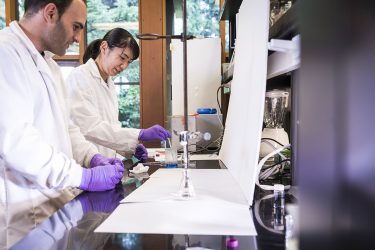
Dyes are widely used in industries such as textiles, cosmetics, food processing, papermaking and plastics. Globally, we produce about 700,000 metric tons of dye each year to color our clothing, eyeshadow, toys and vending machine candy.
During manufacturing, a tenth of all dye products are discharged into the waste stream — most escape conventional wastewater-treatment processes and remain in the environment, often reaching lakes, rivers and holding ponds, and contaminating the water for the aquatic plants and animals that live there. Even a little added color can block sunlight and prevent plant photosynthesis, which can disrupt entire aquatic ecosystems.
A team led by the University of Washington has created an environmentally friendly way to remove color from dyes in water in just seconds. The technique was described in a paper published online in June in the journal Applied Catalysis B: Environmental.
“A small amount of dye can pollute a large volume of water, so we needed to find a way to very quickly and efficiently remove the color,” said senior author Anthony Dichiara, an assistant professor of bioresource science and engineering in the UW School of Environmental and Forest Sciences. “We were pretty impressed with what we were able to achieve.”

